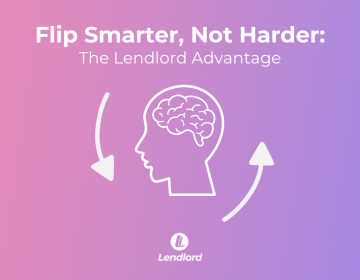Lendlord
The 7 metrics all landlords should be tracking
16 July 2021 6351 Views

Understanding the exact position of your property portfolio is crucial, this means, you need to get constant access to accurate information.
The ability to make good decisions are very important in order to grow your property business. And the best way to make good decisions is with access to the right information.
Having your information at your fingertips with the ability to access it from anywhere can be achieved by adopting digital platforms such as Lendlord.
So, with this in mind, what important metrics should you be tracking?
LTV (Loan to Value)
With up-to-date information on the LTV of your individual properties and of your portfolio, you will have a better idea of your current position and your options to refinance. Some lenders have restrictions on the overall LTV of a portfolio and criteria can change quickly in the current environment.
Portfolio Total Equity
How much equity do you have in your portfolio? Knowing the current estimated property value minus the current balance of mortgages and other loans, will give you a clearer idea of the choices you have, particularly if you are thinking of refinancing to capitalise on the stagnant property market and expand your portfolio.
Portfolio Interest Cover Ratio
The Interest Cover Ratio (ICR) of your portfolio, based on your outgoing interest payments and incoming rental income, is used by lenders to determine the resilience of your portfolio to increases in interest rate and it can be a key determining factor in your ability to secure a new mortgage. BM Solutions, for example, carries out a stress test that requires rental income to cover at least 145% of mortgage interest payments at 5.50% across the portfolio. Understanding the position of your portfolio will help you to understand your options.
Rental Cover Ratio
You should also stress test each property and the entire portfolio with your current interest rate and mortgage monthly cost, in case your tenants stop paying their rent or are only able to make payments based on Local Housing Authority rates or Universal Credit. This metric will help you understand your overall risk level on the entire portfolio level and how much runway you have if your tenants stop paying and is, needless to say, particularly important at the moment.
Net Cash Flow
Your actual cash flow is based on the actual rental income minus the actual monthly expenses. Net cash flow is often different to gross cash flow, which is rental income minus fixed costs.
Yield
It is important to stay on top of the gross yield of your portfolio, which is the annual income generated by the assets divided by their price, and the net yield, which is the annual profit minus costs generated by the assets and divided by their price.
ROI
Possibly the most important metric of any investment is the ROI, or return on investment. This is the annual profit (income minus costs) generated by your portfolio, divided by the cash you have put in.
Tracking all of these metrics on an ongoing basis is important for any portfolio landlord when the ability to make well-informed decisions quickly can prove the difference between success and failure.
Fortunately, technology platforms, like Lendlord, can make it very easy to track all of these metrics on an ongoing basis, helping you to make better-informed decisions and grow your property business.
Create your Free Lendlord account
Previous Articles
.png)
Navigating the New Rules: How...

Lendlord's New Deal Analyser: A...

Flip Smarter, Not Harder: The...
.png)
Property Management in 2024: How...



